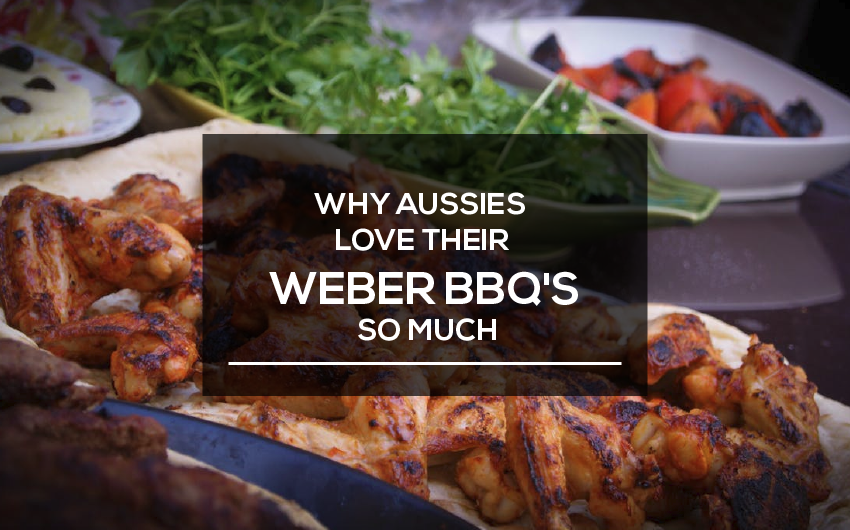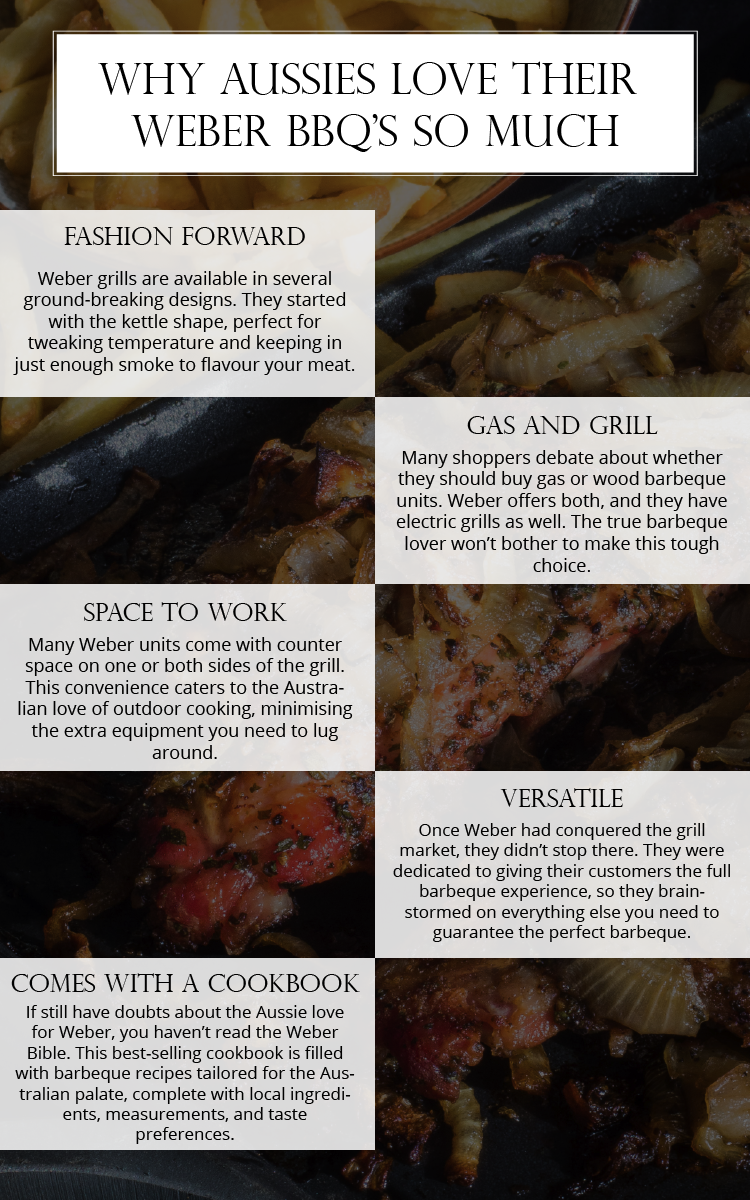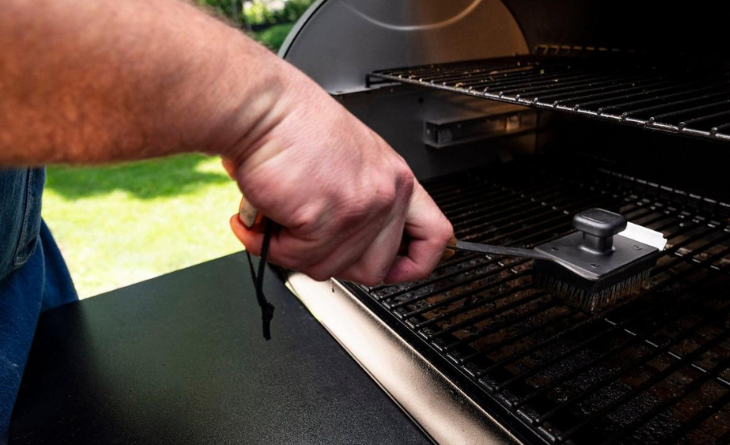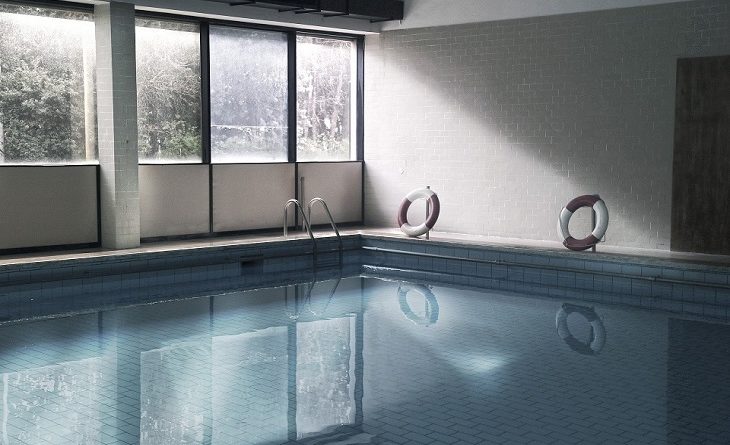
Aussies love a good story, and the origin of Weber Barbeque grills is definitely a good story. It starts in the 1950s with a clever man named George Stephens. He developed an adorably designed barbeque grill that was shaped like two interlinking woks.
This dome-shaped grill ran on charcoal, and he took his design to a sheet metal factory owned by the Weber Brothers. They put together a prototype for him, and he shopped it around the ‘malls’ of the day, where it found strong demand from home barbeque enthusiasts. By 1954, it was a big hit.
George was so successful with his little charcoal barbeque that he bought out the Weber Factory and used it to manufacture his grill for the mass market. He retained the name, benefitting from the heritage that the Weber Brothers had already built up.
It was an astute business move, and helped boost his sales. In many parts of the world, people still say ‘Weber’ when they mean barbeque grill, without realising it’s actually a brand name. Twenty years later, Weber moved into the gas market, developing a gas barbeque grill. Next was the Smoky Weber, specially designed for smoking meat.

FASHION FORWARD
Weber grills are available in several ground-breaking designs. They started with the kettle shape, perfect for tweaking temperature and keeping in just enough smoke to flavour your meat. The capsular design of the Smoky Mountain models was an improvement on the kettle, offering lots of room for smoke to circulate cuts of meat.
By the time Weber was developing its aerodynamic counter-top units, Weber had sealed its reputation for being both stylish and functional. Many people view it as the sports car of barbeque grills, combining portability, power, and prestige.
GAS AND GRILL
Many shoppers debate about whether they should buy gas or wood barbeque units. Weber offers both, and they have electric grills as well. The true barbeque lover won’t bother to make this tough choice. They’ll just buy one of each. The gas grill is great for busy weeknight steak, and the charcoal grill is for hanging out with friends over weekend beer and roast.
Weber’s electric units are largely tabletop units ideal for indoor-outdoor spaces or campouts, but only if you have access to an electric outlet. That’s part of Weber’s appeal, knowing there’s one for every occasion. Nowadays, you can even have a Weber built into your kitchen or your alfresco cooking area.
SPACE TO WORK
Many Weber units come with counter space on one or both sides of the grill. This convenience caters to the Australian love of outdoor cooking, minimising the extra equipment you need to lug around. The portability of Weber grills makes them easy to use since even the larger units have wheels to help them get around.
Most units are made of stainless steel and have attractive coloured finishes. This makes all their grills – even the soot-inducing charcoal ones – easy to clean and maintain. And when you’re done grilling, you can use Weber’s designated cleaning fluid to leave the barbeque unit spotless, with a spritz of metal protector fluid for extra anti-rust insurance.
VERSATILE
Once Weber had conquered the grill market, they didn’t stop there. They were dedicated to giving their customers the full barbeque experience, so they brainstormed on everything else you need to guarantee the perfect barbeque. Weber now produces a line of barbeque accessories that include grilling tools, trays, brushes, rotisseries, and dust covers.
They drilled right down into the intricacies of grilling, with thermometers, gloves, heat-proof mats, casserole dishes, pizza pans, smoker sets, and even a line of fruitwood chips to give your barbeque that rich, smoky flavour. They offer the full package. Plus, they come with a five-year warranty, so you know you’re covered if anything happens to your grill.
Comes with a Cookbook
If still have doubts about the Aussie love for Weber, you haven’t read the Weber Bible. This best-selling cookbook is filled with barbeque recipes tailored for the Australian palate, complete with local ingredients, measurements, and taste preferences. It was first published in 1998 and continues to be relevant for meat lovers everywhere.
Over the years, variants have been printed, such as the Kettle Cookbook and the Weber Q Cookbook. They’re all written, published, and tested for the Australian market, though the rest of the world gets culinary fun out of them as well.
Read More : How to Keep Your Grill Clean





